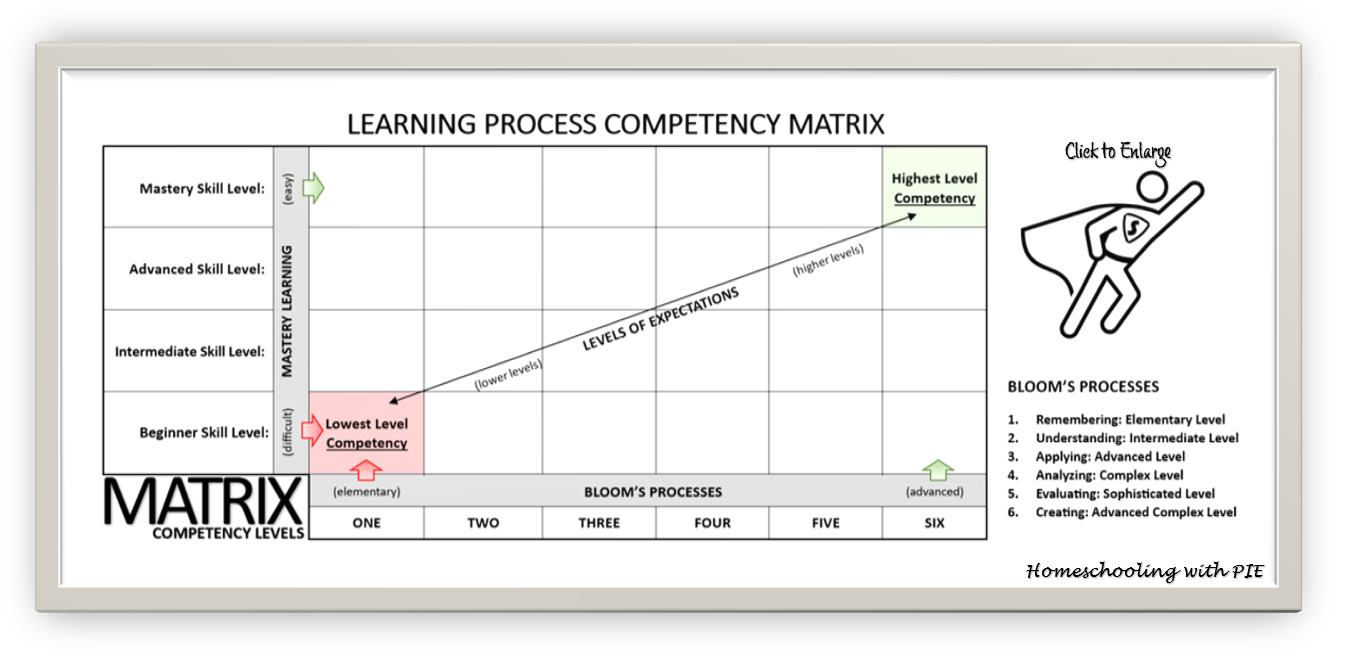MANAGING EXPECTATIONS: COMPETENCY MATRIX

Managing Expectations: Competency Matrix
Unlocking Success: Navigating Competency for Practical Mastery
In the context of education, competency refers to the knowledge, skills, abilities, and attitudes that individuals acquire and demonstrate in a particular subject area or field of study. Competency goes beyond mere memorization of facts and extends to the application of knowledge and skills in real-world situations.
Educational competency often involves the mastery of specific learning objectives or outcomes outlined in a curriculum. It implies a deep understanding of the subject matter and the ability to use that knowledge effectively. Competent individuals in an educational context can apply what they have learned to solve problems, make informed decisions, and perform tasks related to the subject matter.
Competency-based education emphasizes the attainment of specific competencies as the primary goal of learning, allowing learners to progress at their own pace and demonstrating their proficiency before moving on to more advanced material. This approach focuses on the practical application of knowledge and skills, preparing individuals for success in their academic and professional endeavors.
BLOOM'S PROCESS VS. MASTERY LEARNING
In the context of Bloom’s Processes and Mastery Learning, the lowest level of competency in Bloom's Revised Taxonomy corresponds to basic recall and recognition, while the highest level involves the creation of new knowledge and the ability to apply concepts in diverse and advanced contexts. Mastery Learning emphasizes reaching the highest level of competency before progressing to more advanced material, ensuring a thorough understanding of the subject matter.
BLOOM'S PROCESSES
Here are six levels of complexity, ranging from simple to complex, that coincide with Bloom’s Processes:
- Elementary Level (Remembering): Basic components or elements are considered individually with minimal interactions.
- Intermediate Level (understanding): Elements start to interact, and there is a basic understanding of relationships and connections between them.
- Advanced Level (Applying): Increased complexity with multiple interacting components, requiring a deeper understanding of their relationships.
- Complex Level (Analyzing): Numerous interconnected elements, with a high level of interdependence and dynamic interactions.
- Sophisticated Level (Evaluating): Systems at this level often involve intricate structures, feedback loops, and a need for a comprehensive understanding of the relationships between components.
- Advanced Complex Level (Creating): The highest level of complexity, involving intricate systems with numerous interconnected elements, nonlinear dynamics, and often requiring advanced tools or methods for analysis. Understanding and managing systems at this level can be particularly challenging.
MASTERY LEARNING
Generally, the difficulty level is considered to be highest at the beginning stages of learning a new skill, and it becomes easier as one progresses towards mastery. Let’s clarify:
1. Beginner Skill Level:
- Difficulty: Learning a new skill from scratch can be challenging. Beginners often struggle with basic concepts, techniques, and understanding the fundamentals.
- Characteristics: Lack of experience and familiarity with the task. Mistakes are common, and progress may seem slow.
2. Intermediate Skill Level:
- Difficulty: Still challenging, but the learner has gained a basic understanding. More complex aspects of the skill are introduced, requiring more effort and practice.
- Characteristics: Progress is noticeable, and the learner is becoming more comfortable. Mistakes are less frequent but still occur.
3. Advanced Skill Level:
- Difficulty: The skill is well-understood, but achieving mastery requires refining techniques, deepening understanding, and tackling more nuanced aspects.
- Characteristics: Proficiency is evident. The learner can handle complex tasks, but there's always room for improvement.
4. Mastery Skill Level:
- Difficulty: At this stage, the skill becomes second nature. The focus is on finesse, creativity, and continuous improvement.
- Characteristics: The skill is executed effortlessly. The learner can adapt easily to different situations and may even contribute to the evolution of the skill.
LEVELS OF EXPECTATION
In education, as you become better at something, like learning a new skill or understanding a subject, the level of what people expect from you also goes up. Imagine you're learning to ride a bike. At first, everyone is just happy if you can pedal without falling. But as you practice and get really good, people start expecting more from you, like riding faster or doing tricks. The same idea applies to school – as you become more competent and knowledgeable in a subject, parent-teachers and others around you expect you to do more advanced things, like solving harder problems or explaining complex ideas. So, in simple terms, the better you get at something, the higher the expectations become.
CONCLUSION
In summary, the lowest level of competency in Bloom's Revised Taxonomy corresponds to basic recall and recognition, while the highest level involves the creation of new knowledge and the ability to apply concepts in diverse and advanced contexts. Whereas Mastery Learning emphasizes reaching the highest level of competency before progressing to more advanced material, ensuring a thorough understanding of the subject matter. In the context of mastery, the perceived difficulty tends to be highest for beginners due to the unfamiliarity with the skill. As one progresses and gains experience, the difficulty decreases, making it easier to operate at a higher skill level.
Managing Expectations: Competency Matrix